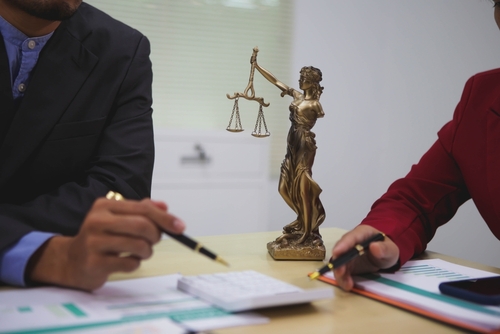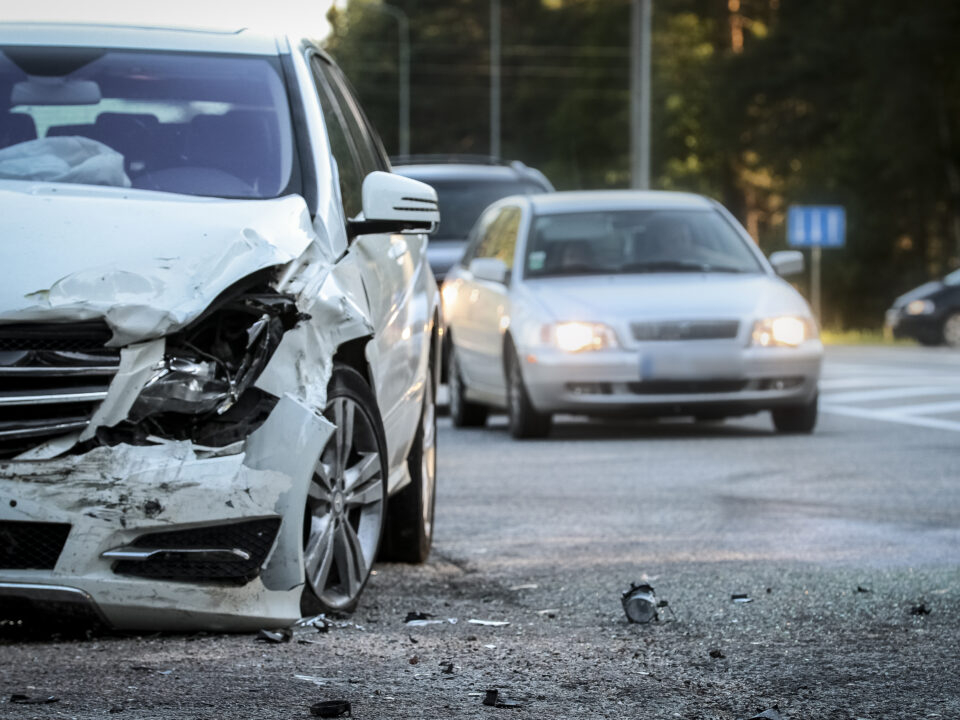
Drunk Driving Accident Lawyers: Your Solution for Seeking Justice after a Crash
October 24, 2024
Understanding Your Birth Injury Lawsuit: Steps to Secure Compensation
January 10, 2025What is a Personal Injury Claim?
Personal injury law can be confusing, especially if you or someone you know has been injured because of someone else. Knowing the types of personal injury cases is key to knowing when to take action. This post will go over 6 types of personal injury cases and break down the basics of personal injury claims so you can fight for your rights.
What is a Personal Injury Claim?
A personal injury claim is a legal process started by someone who has been hurt because of someone else’s negligence or intentional actions. This type of legal dispute is a way for the injured person, the plaintiff, to get compensation for the damages they’ve suffered because of the incident.
Here's a breakdown:
- Filing the Claim: The process starts when the plaintiff sues the party they believe is responsible for their injuries, the defendant. This could be another person, a company, a government agency or any entity whose actions or negligence caused the injury.
- Burden of Proof: The plaintiff must prove the defendant was negligent or reckless. This means showing the defendant had a duty to keep safe or avoid harm, they breached that duty through their actions or inactions and that breach caused the injury in question.
- Outcome of the Claim: The end goal of a personal injury claim is to get compensation for the plaintiff. This can cover medical expenses, lost wages, pain and suffering and other related damages. The process can end in a settlement out of court or if necessary a court judgment after a trial.
Now that you know the basics you can recognize valid personal injury claims and when to get legal help for the harm.
Types of Personal Injury Cases
1. Car Accidents and Motorcycle Accidents
Car accidents and motorcycle accidents are the most common types of personal injury claims in Florida. These types of personal injury are usually caused by negligent driving and can be devastating for those involved.
Common Causes
Many car accidents are caused by distracted driving where the driver’s attention is diverted from the road, usually by mobile devices, passengers or other distractions inside or outside the vehicle. Speeding and reckless driving also contribute to accidents, with drivers not following speed limits or engaging in aggressive driving which increases the risk of collision.
Legal Action for Compensation
When in a car accident the victim can get compensation from the at-fault driver. This process involves proving the other driver was responsible for the accident because of their negligence or reckless behavior. The claim covers all damages related to the accident including medical expenses, lost wages, pain and suffering and other related costs.
Typical Injuries
Injuries from car accidents can be minor or severe, from minor cuts and bruises to life altering conditions. Common injuries are whiplash which is caused by the sudden jerking motion of the head and neck, broken bones which can occur from impact with parts of the car or other objects and traumatic brain injuries which can have long term cognitive and physical effects.
Now that you know the car accident claims process you can get involved in one. Knowing your rights and what to do after an accident can make a big difference in the outcome of your claim and get you the compensation you need to get back to normal.
2. Slip and Fall Accidents
Slip and fall accidents are a big part of personal injury claims and are usually classified under premises liability. These types of incidents show the responsibilities of property owners to keep their premises safe for visitors and tenants.
Premises Liability
This legal concept holds property owners responsible for accidents and injuries that happen on their property. The core of a slip and fall case is proving the property owner failed to keep the premises safe and that failure caused the accident. Common examples of negligence are wet floors without signs, uneven surfaces without warning and icy walkways not treated.
Proving Negligence
To prove liability in a slip and fall case the injured party must show the property owner knew or should have known about the hazardous condition and failed to fix it in a reasonable time. Documentation of the scene, witness statements and previous complaints about the same issue can be key evidence in these cases.
Common Places Slip and Falls Happen
These can happen anywhere but are common in retail stores, restaurants, office buildings and private homes. In commercial areas high foot traffic increases the likelihood of slip and fall incidents so regular inspections and prompt remediation of hazards are must do’s for property owners.
Injuries from Slip and Falls
Injuries from slip and fall accidents can be severe from minor bruises and lacerations to more serious injuries like broken bones, head injuries and in extreme cases spinal cord injuries. The physical impact can result to big medical bills, loss of income and long term rehabilitation needs.
Knowing slip and fall accidents is important for both property owners and visitors. For those who got injured, knowing how to file a claim and what evidence to present can be key to getting fair compensation for their losses. That’s why it’s always best to consult a personal injury lawyer.
3. Product Liability
Product liability means the legal responsibility of manufacturers, distributors and retailers to make sure the products they put in the market are safe for consumer use. When they fail to do so and a consumer gets injured, a product liability case may arise.
Types of Defects
Product liability cases often center on defects which can be categorized into three:
- Design Defects: These are inherent flaws in the product design that make it unsafe for its intended use or foreseeable misuse.
- Manufacturing Defects: These happen during the construction or production of the item and can be due to poor workmanship, substandard materials or deviation from design specifications.
- Marketing Defects: These are failures in how the product is marketed such as inadequate safety warnings, insufficient instructions or misleading marketing that fails to disclose the risks.
Who is Responsible for Safety
The law requires all parties in the product supply chain from manufacturers to retailers to make sure the product is defect free and safe for public use. This broad responsibility means any party involved in the production or distribution of a defective product can be held liable if that product causes injury.
Products Involved
The scope of products that can be involved in product liability cases is wide. It includes everyday consumer goods like appliances and electronics, children’s toys, automotive parts and more complex products like pharmaceuticals and medical devices. Each type of product has its own set of regulations and risks so product liability is broad and varied.
Filing Product Liability Claims
These claims are tough because of the technical expertise needed to understand the product design and manufacturing process and to show how the defect caused the harm. Victims of defective products often need to rely on expert witnesses to establish the nature of the defect and the performance of the product if it was made right.
Knowing product liability is important for consumers who got injured from defective products. It stresses the need to get skilled legal representation to handle the tough parts of the claims from proving the defect to showing the link between the product and the injury.
4. Workplace Accidents
Workplace accidents are a common occurrence that can happen in any workplace from construction sites to quiet offices. These incidents not only cause physical injuries but also financial and emotional stress to the injured parties.
Various Environments and Causes
While construction sites are often highlighted because of the high risk nature of the work, injuries can and do happen in other settings. Common causes of workplace accidents are falls from height or on the same level; accidents involving machinery or equipment; exposure to harmful substances; and repetitive stress injuries which develop over time from repetitive motions or poor ergonomics.
Employer Responsibilities
It is the legal requirement of employers to provide a safe working environment. This includes regular safety training, provision of personal protective equipment, ensuring machinery is maintained to safe standards and implementing comprehensive safety protocols. Failure to meet these obligations can result to liability for any injuries that may occur.
Types of Injuries
Injuries from workplace accidents can vary in severity depending on the nature of the incident. Broken bones from falls or being hit by heavy objects, head trauma which can be severe and cause long term cognitive problems, spinal cord injuries which can result to permanent disability. Less visible but equally worrisome injuries are respiratory conditions from exposure to toxic substances or long term musculoskeletal disorders from repetitive strain.
Legal and Compensation Claims
Filing for workers’ compensation claims after a workplace accident means getting medical benefits and wage replacement. But if the employer was negligent, the injured party can also file a lawsuit outside of workers’ comp for damages not covered by workers’ comp insurance.
Knowing the risks and understanding the legal rights involved in workplace injuries is important for both employees and employers. Making sure all safety measures are followed and knowing what to do when an accident happens can help minimize the effects of workplace injuries and provide a clearer road to recovery and compensation.
5. Birth Injuries
Birth injuries are traumatic for families and can happen during the labor and delivery process. These injuries can affect the child’s life and cause emotional and financial stress to the family.
Causes of Birth Injuries
Birth injuries can occur due to many factors, often due to inadequate medical care. Common causes are improper handling of the baby during delivery, failure to monitor the fetus, delayed C-sections or misuse of delivery tools like forceps or vacuum extractors. These incidents may be due to medical negligence when healthcare providers fail to follow protocols or react to complications.
Types of Birth Injuries
The types of birth injuries are many and varied. Common injuries are cerebral palsy from oxygen deprivation during delivery, brachial plexus injuries which affect the nerves that control the arms and hands, fractures especially to the collarbone or skull during difficult delivery and perinatal asphyxia which is lack of oxygen and blood flow to the baby’s brain.
Healthcare Provider Responsibility
Healthcare providers have a duty of care to both mother and child during childbirth. This includes monitoring vital signs, diagnosing and reacting to distress and using appropriate delivery techniques. Failure to meet these responsibilities can result to devastating consequences and basis for a birth injury claim.
Filing Birth Injury Claims
Birth injury claims are complex because of the medical knowledge required to prove negligence. Families have to rely on medical experts to testify on what standard care should have been and how the care given deviated from that standard. These claims aim to get compensation for medical treatment, ongoing care costs and in some cases, pain and suffering of the child and family.
Knowing birth injuries and the circumstances surrounding them is important for families affected by such traumatic events. Knowing the legal options available can help families get the necessary compensation to support the child’s needs so they can get the care and therapies they need for the best possible life after injury.
6. Dog Bites
Dog bites are a public health issue and can cause severe physical and emotional injuries especially to children and vulnerable adults. Knowing the legal and medical aspects of dog bites is important for victims to get redress and compensation.
Causes of Dog Bites
Dog bites can happen for many reasons including improper training, lack of supervision or provocation by the victim. But the responsibility lies with the dog owner to ensure their pet does not harm others. Situations that commonly lead to bites are dogs being off-leash in public areas or not securing dogs behind adequate fencing at home.
Legal Liability
In many states including Florida, dog owners are held strictly liable for injuries caused by their pets regardless of the animal’s prior behavior. This means a victim of a dog bite can get compensation from the owner without proving negligence. But the laws vary.
Types of Injuries and Complications
Dog bites can range from minor punctures to severe maulings that cause soft tissue damage, broken bones and infections. In severe cases, reconstructive surgery may be needed. Psychological effects like post-traumatic stress disorder (PTSD) are also common among dog bite victims.
Compensation
Compensation for dog bite injuries may include medical expenses for immediate and ongoing care, lost wages if the victim cannot work, pain and suffering and in severe cases, money for psychological counseling. In some cases if gross negligence is found, punitive damages may be awarded against the dog owner.
Filing a dog bite requires knowing your legal rights and remedies. Victims should consult with a personal injury lawyer who handles dog bite cases to get full compensation for their injuries and long term effects.
Filing a Personal Injury Lawsuit
What to Expect
When it comes to getting justice for injuries caused by negligence or wrongful acts, filing a personal injury lawsuit is the next step. But this process is intricate and demanding and requires attention to detail and knowledge of the legal process.
Complexity and Timeframe
Filing a personal injury lawsuit is known to be complex and time consuming. Every case has its own challenges and requires thorough investigation to build a strong case. The timeframe can vary greatly depending on the complexity of the case, the cooperation of the parties involved and the efficiency of the court.
Role of a Personal Injury Lawyer
Hiring an experienced personal injury lawyer is key. A good lawyer will not only guide you through the legal process but will also handle the important tasks of gathering and analyzing evidence, filing all the necessary legal papers and meeting deadlines. Their expertise is crucial in building a strategy to get a good outcome.
Evidence and Documents
One of the first things your personal injury lawyer will help you with is the gathering of evidence. This may include medical records, witness statements, expert testimony and any other documents that will support your claim of negligence or wrongdoing of the defendant. Proper documentation is important to prove your case and establish the extent of your injuries and financial losses.
Negotiations and Litigation
A big part of a personal injury lawsuit is the negotiations with the defendant or their insurance company. Your lawyer will represent you in these discussions to get a settlement that will fairly compensate for your injuries and losses. If a settlement can’t be reached, the case may go to trial where your lawyer will argue your case before a judge or jury.
Purpose of the Lawsuit
The ultimate goal of a personal injury lawsuit is to get fair compensation that will cover all your related expenses including medical bills, lost wages and compensation for pain and suffering. In some cases if the defendant’s conduct was egregious, punitive damages may also be sought to punish the wrongdoer and deter similar behavior in the future.
Knowing what to expect when filing a personal injury lawsuit will help you prepare and make the process smoother. With the right lawyer, you can get through the challenges and get the compensation you deserve.
Damages and Compensation
Compensatory Damages
Compensatory damages are the foundation of personal injury cases, to make the injured whole by covering all the losses related to the injury. These damages are divided into two:
- Economic Damages: These are specific and measurable losses such as medical bills, lost wages and property damage.
- Non-Economic Damages: These cover losses that are not measurable, including pain and suffering, emotional distress and loss of enjoyment of life. These are calculated by considering the broader impact of the injury on the victim’s quality of life.
Punitive Damages
Punitive damages go beyond compensation, to punish the defendant for bad behavior and to deter similar future conduct. These are not awarded in every case but are considered when the defendant’s conduct is found to be reckless or intentional. The availability and criteria for punitive damages vary by jurisdiction but generally requires clear evidence of the defendant’s egregious conduct.
Why Legal Representation Matters
Why Hire a Personal Injury Lawyer?
Filing a personal injury claim without a lawyer can be tough, especially when you’re still recovering from your injuries. Here’s why hiring a personal injury lawyer is important:
Guidance
A personal injury lawyer has expertise in legal procedures and tort law, to ensure your case is handled properly. They know the ins and outs of the legal system and can get through the complex process from filing the case to arguing in court if necessary.
Protection of Your Rights
An attorney’s role goes beyond representation; they will protect your rights throughout the legal process. This is especially important when dealing with insurance companies and defense attorneys who will try to minimize your compensation.
Evidence
Collecting and managing evidence can be the difference between winning and losing a personal injury case. An attorney will help gather the necessary documents, get witness statements and if needed, consult experts to strengthen your case.
Negotiation Skills
Personal injury lawyers are skilled negotiators who can deal with the insurance companies on your behalf. They will get a settlement that will accurately reflect the extent of your injuries and losses, often getting better results than you can get on your own.
Decision Making
From initial consultation to settlement or trial, a personal injury lawyer will give you informed advice to help you make decisions. They can advise you on what to do based on the facts of your case, whether to settle or go to trial.
Having the right lawyer can make a big difference in your personal injury claim, so you can get the compensation you deserve and focus on recovery.






